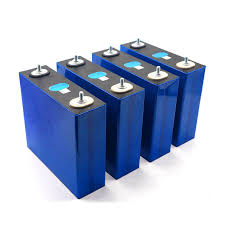In the world of energy storage, various battery technologies compete for dominance, each with its own set of advantages and disadvantages. Among them, LiFePO4 stands out as a promising option, renowned for its safety and longevity. In this article, we’ll compare LiFePO4 with other battery types, including LiFePO4 vs NMC and LiPo/Li-ion, examining their strengths and weaknesses, with a special emphasis on safety and lifespan.
Understanding LiFePO4 vs NMC
LiFePO4 and NMC (Nickel Manganese Cobalt Oxide) are two prominent contenders in the battery market. While NMC offers higher energy density and lower cost, LiFePO4 excels in safety and lifespan. LiFePO4 batteries are inherently more stable and less prone to thermal runaway, making them suitable for applications where safety is paramount.
Comparing Lipo vs Li ion vs Lifepo4
LiPo (Lithium Polymer) and Li-ion (Lithium-ion) batteries are widely used in consumer electronics and electric vehicles. They offer higher energy density and lighter weight compared to LiFePO4. However, LiPo and Li-ion batteries are more susceptible to thermal runaway and have a shorter lifespan. LiFePO4, on the other hand, provides a balance between energy density, safety, and longevity, making it a preferred choice for applications requiring stable and durable energy storage.

Analyzing Safety and Lifespan
One of the key advantages of LiFePO4 batteries is their exceptional safety performance. Unlike other lithium-ion chemistries, LiFePO4 batteries are less prone to thermal runaway and have a higher tolerance for overcharging and over-discharging. Additionally, LiFePO4 batteries have a longer lifespan, with a significantly higher number of charge cycles compared to LiPo and Li-ion batteries.
Exploring 24V Battery LiFePO4
24V LiFePO4 batteries are popular for a wide range of applications, including solar energy storage, marine, RVs, and off-grid power systems. Their stable voltage output, long cycle life, and inherent safety features make them ideal for demanding environments where reliability is crucial.

Conclusion
In conclusion, while NMC, LiPo, and Li-ion batteries offer higher energy density, LiFePO4 stands out for its superior safety and longevity. By understanding the strengths and weaknesses of each battery technology, consumers and businesses can make informed decisions based on their specific requirements. Whether it’s for portable electronics, electric vehicles, or stationary energy storage, LiFePO4 proves to be a reliable and durable choice in the ever-evolving landscape of battery technology.


Программный приемник GNSS – это приемник Глобальной навигационной спутниковой системы (GNSS), который был разработан и реализован с использованием программно-определяемой радиосвязи.
Приемник GNSS, как правило, представляет собой электронное устройство, которое принимает и обрабатывает в цифровом виде сигналы от группировки навигационных спутников, чтобы определить местоположение, скорость и время (приемника)- [url=https://znaipticu.ru/oborudovanie/gnss-priemniki-primenenie-navigatsionnogo-oborudovaniya]gnss приемник.[/url]